Sustainability
The development and adoption of technology has advanced agriculture for more than a century. In 1905, field work for crop cultivation was primarily done with manual labour and the help of horses. Throughout the 1930s, farmers used mechanized tractors to help complete this work. In the 1950s, the combine helped farmers harvest their crops in a timely fashion. The 1980s saw new technologies, such as power steering, included on equipment which helped farmers complete field work more efficiently. At the turn of the century, farmers were able to use equipment that was larger and more powerful, but still efficient, to complete field work. Farmers now have access to precision technologies which, through the use of GPS, allow tractors and combines to drive themselves.
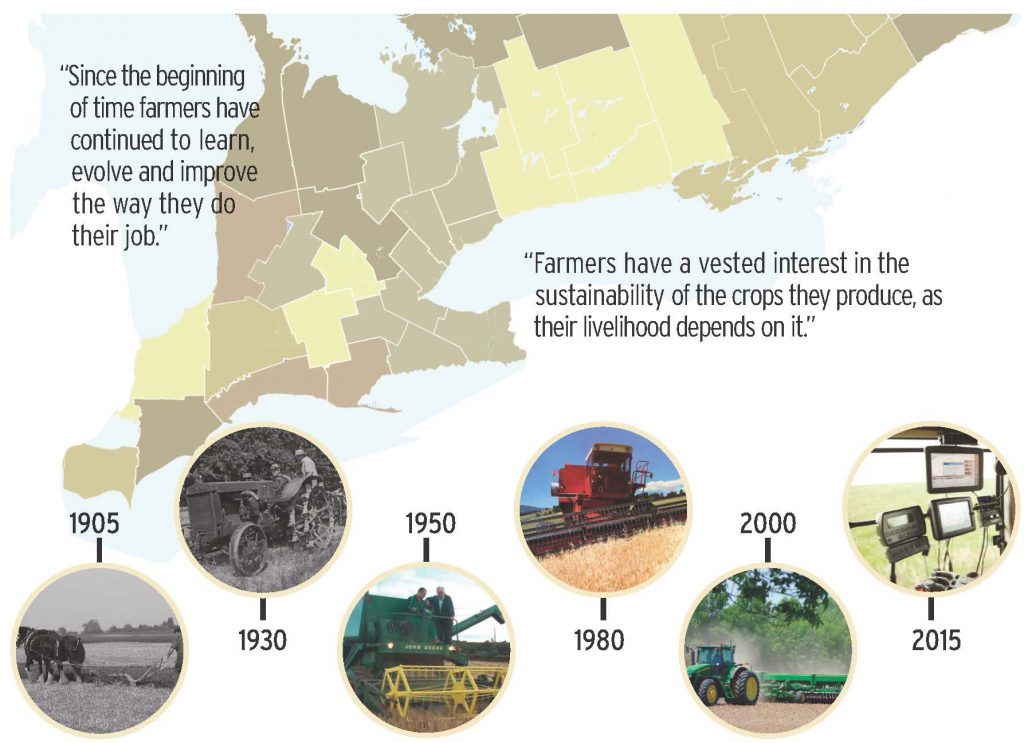
Facts
Sustainability is the ability for our farmers to be economically viable, while not sacrificing our social and environmental responsibilities.
The ‘very low soil erosion class’ includes 29% of Ontario cropland.
Climate impact in the production of winter wheat decreased by 30% between 1981 and 2011.
Since 1981, Ontario soybean production land use efficiency has increased by 17%.
Use of conservation and no-till on cropped land more than doubled in Canada between 1991 and 2006.
1 of every 8 Canadian jobs is related to Agriculture.
Over the last 34 years, Ontario’s grain farmers have reduced their climate impact1 in corn by 37%.
1 Climate impact includes energy use indicator (converted to CO2 equivalents), along with soil organic carbon, direct nitrous oxide emissions (from nitrogen fertilizer applications, nitrogen that becomes available after crop residue decomposition), indirect nitrous oxide emissions (from leaching/runoff and volatilization).
Giving back to the community
Grain Farmers of Ontario have supported over sixty safety associations, plowing matches, 4H members, agricultural societies, luncheons, scholarships and fairs across the province.

Between 1981 and 2011, Ontario’s grain farmers increased land use efficiency by 35% for winter wheat.
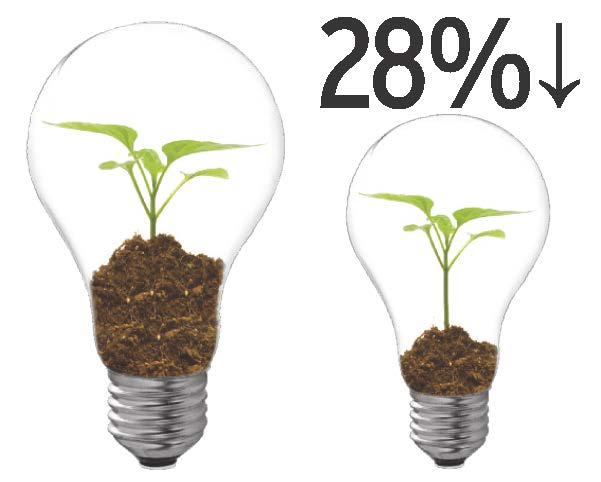
28% less energy was used between 1981 and 2011 to plant, grow, and harvest soybeans (Energy use includes field work, fuel, electricity, energy to produce fertilizer or machinery).
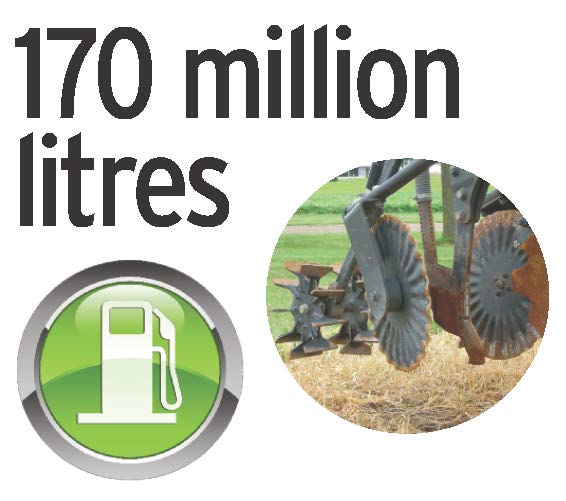
Conservation tillage in Canada saves more than 170 million litres of fuel from being burned.
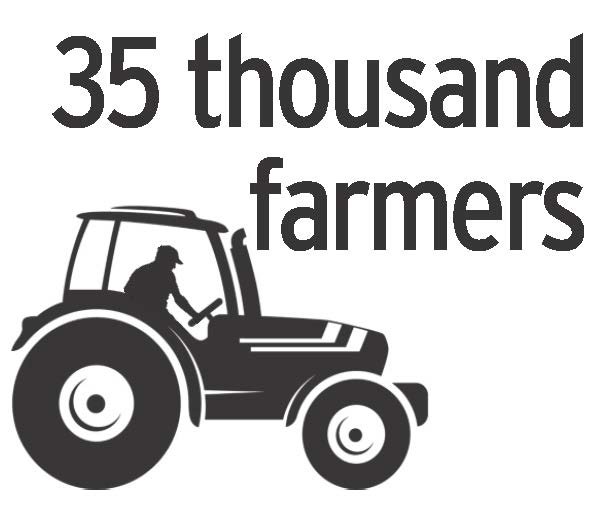
Since 1993, the Environmental Farm Plan (EFP) program has helped more than 35,000 Ontario farmers develop and implement more environmentally sustainable practices on their farms.
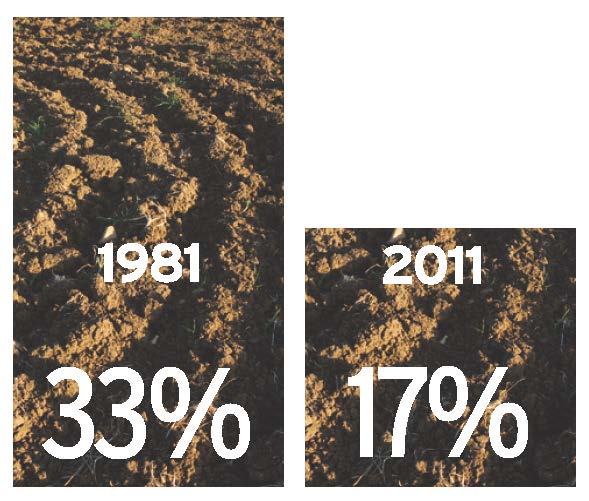
Ontario cropland in very high risk soil loss class has decreased from 33% to 17%.
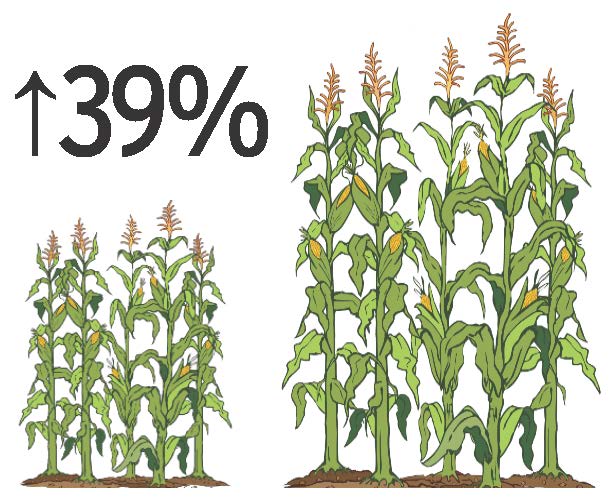
Strong yield increases have led to 39% improved land use efficiency since 1981, growing more corn on the same amount of land.
